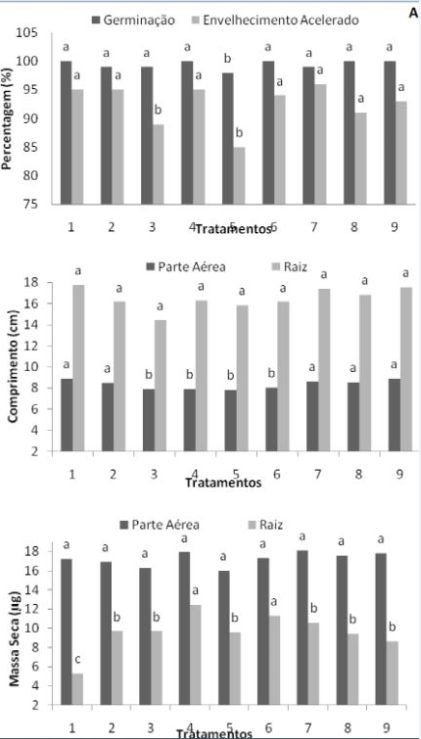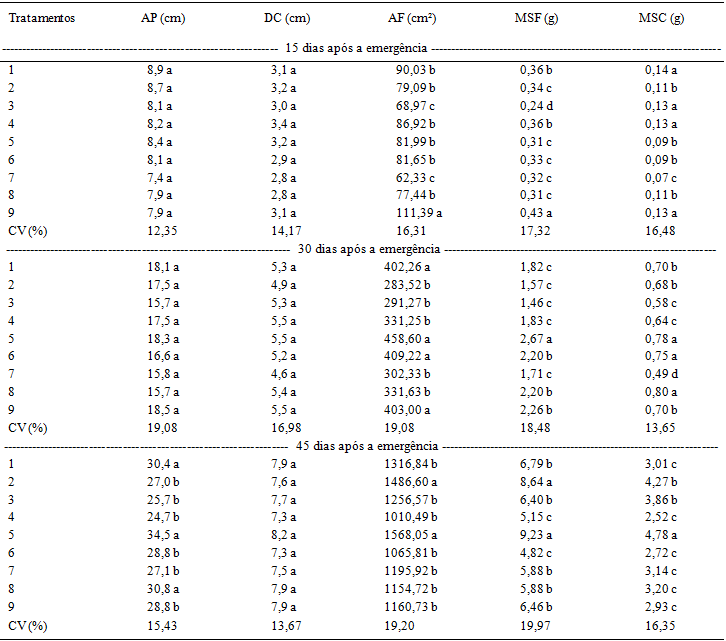Every year, new products are discovered and used for seed treatment in soybeans (Glycine max. L. Merril), aiming to increase production. There is the need to know the influence of the products on the development of plants in order to be succeed in the activity. The aim of the experiment was to evaluate the effect of products applied as seed treatment on the morphology of soybean plants at different stages of crop development, as well as the components of income and productivity. The products used were: tiametoxan; [abamectina + tiametoxan + fludioxonil]; [fipronil + tiofanatometilico + piraclostrobina]; [imidacloprido + tiodicarbe]; Cruiser Advanced(r); carboxamida; abamectina; [metalaxyl-M + fludioxonil]; and the control without treatment. In the first step, it was evaluated the physiological quality of treated seed. Subsequently, it was evaluated the initial growth at 15, 30 and 45 days after emergence. In the third stage were evaluated agronomic traits and yield components. The experimental design used for physiological tests of the seeds was randomized and the measurements of early development and late season, were randomized blocks. For statistical analysis, it was used the program SASM-Agri (CANTERI et al., 2001). It was concluded that the mixture of active ingredients insecticides and fungicides affect the early development of soybean seedlings. At 45 days after emergence, there is a positive effect of the products Tiametoxan, [abamectina + tiametoxan + fludioxonil], Cruiser Advanced(r) and [metalaxyl-M + fludioxonil] on growth, but this stimulus, is not reflected in the final production.
Glycine max (L.) Merrill; insecticides; growth; production

 Thumbnail
Thumbnail



